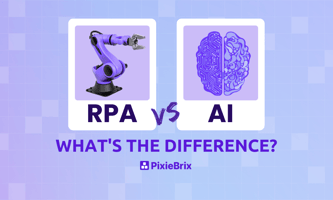We asked senior IT leader and RPA expert, Doug Shannon, a few questions about his experience with...
Four questions with RPA leader Tolani Jaiye-Tikolo
We asked senior RPA leader and intelligent automation expert, Tolani Jaiye-Tikolo, a few questions about her experience with open-source RPA. Here’s what we heard:
We’ve recently seen an uptick in open-source RPA. What do you think is behind this trend?
It’s simple.. Commoditization. RPA is becoming a commodity and open-source RPA is one of the key drivers. Open-source RPA is breaking entry barriers into business process automation for small and medium sized businesses with free bot licenses or zero licenses. Large enterprises are beginning to have a rethink about their current bot utilization and as such, open-source RPA is seen as a great alternative.
When a company is evaluating a commercial platform vs. open source, what are some of the key trade-offs to have in mind?
License cost, Cross platform, Toolkit range, Community and Platform support are very vital in evaluating vendors. Some of the popular commercial platforms are characterized by “cut-throat” license costs that require a vendor lock-in for 1–3 years. The open-source RPA tools provide the opportunity for companies to slowly try out RPA before investing deeply into any tool.
Cross-platform or multi-platform is one of the selling points for open-source RPA. It covers a range of operating systems; Windows, Linux, MacOS etc. The existing commercial platforms rely solely on the Windows platform, which is a limiting factor in terms of the target audience.
Toolkit range for hyperautomation/intelligent automation is another one to watch out for as the industry is gearing towards this. Features such as Intelligent Document Processing (IDP), Process Mining are no longer “nice to have” but a must have for vendors that want to succeed in the next phase of growth. The open-source RPA vendors are steadily building these capabilities to compete with the big commercial vendors.
Platform support for Citrix, SAP, Mainframes, Desktop, OCR and APIs should be carefully considered as it can make or break your automation strategy. Open-source RPA may not fully cater to all these in comparison to the commercial vendors.
Lastly, developers, business analysts, project managers, delivery leads need a vendor community they can rely on, access and benefit from. Open-source tools have a way of building large communities. AutoHotKey and AutoIT are great examples. Robocorp and TagUI are following suit and in the future, will outnumber the popular communities — UiPath.

For more on this, check out Open Source RPA — The new face of innovation and the next evolutionary step in RPA
What are the areas to watch in intelligent automation over the next 1–5 years?
There are maturing and fast-growing areas.
The maturing areas include Intelligent Document Processing (IDP) and Intelligent Virtual Assistants (IVA) whilst the fast-growing areas include Chatbots, Low-code/No-code, Process Mining and Task Mining.
The maturing areas will continue to proliferate, and several use cases will arise. Covid accelerated some of these use cases in Financial Services. Customers with heavy paperwork are looking for more effective ways to use OCR, Computer Vision, ML, NLP through IDP to extract data feeds for RPA bots. I’m expecting more wide adoption for this technology.
Fast growing areas are complementary technologies that can be used with RPA to drive End-End automation. Whilst RPA is dealing with a lot of legacy applications, Low-code/No-code can help modernize some of these applications.
Any final thoughts?
Open-source RPA players have a unique proposition as they address concerns around vendor lock-in, one platform (Windows OS) and affordability. Majority are built on a core language used for AI — Python, which will help unlock more innovation.
We have had major successes with open-source in the past; Linux, Android and while we can’t rest on our laurels, we need to pay attention to how open-source RPA will shape our understanding of RPA — industry standardization, collaboration and innovation.
Note: these answers are Tolani Jaiye-Tikolo’s based on her deep experience managing digital transformation and intelligent automation initiatives. These comments do not represent any team or company Tolani works for or has worked for.


